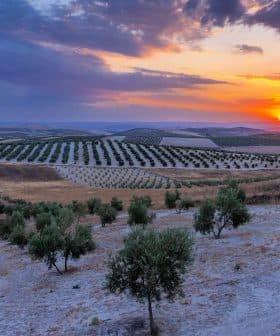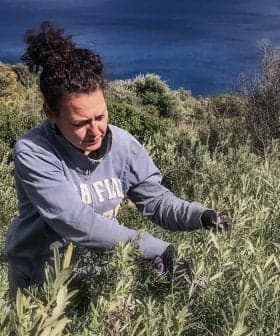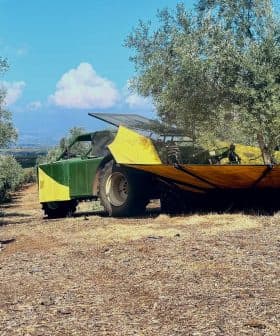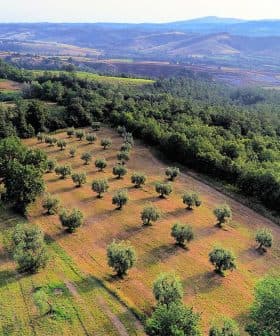Where Olive Oil Demand is Waxing and Waning
The demand for olive oil is expected to continue growing for the next five years, driven by health interests in both developed and emerging markets beyond the Mediterranean, according to a Rabobank report. The report highlights opportunities for big global brands, cost leaders, and niche producers to expand their market presence by adapting to different markets, strengthening their supply chains, and diversifying sourcing amid price volatility. Distribution is key to success in China, where foreign branded players need access to distribution channels to reach consumers who lack brand loyalty.

The spectacular surge in demand for olive oil in developed and emerging markets beyond the Mediterranean will last at least the next five years, largely driven by health interests, a Rabobank report says.
The bank’s food and agribusiness research unit sees market expansion opportunities for big, global brands and also for cost leaders who tap private label growth and set up distribution deals in China.
But all need more integrated supply chains, to adapt their business models to suit different markets, and to diversify and strengthen their sourcing amid increasing price volatility, it said.
The main players in global olive oil sales
In “Globalization of Olive Oil Demand,” Rabobank divided the retail market into three groups:
- global branded bottlers, e.g. Deoleo/Bertolli, Salov/Berio and Borges brands;
— cost leaders/private label suppliers, e.g. Sovena and Hoijblanca, and countries such as Spain, Morocco and Tunisia;
— high-end niche producers.
Distribution key to cracking China
It said the big bottlers would succeed “with A‑brands and in emerging countries.” But while the market could not do without strong A‑brands, B‑brands can’t match their innovation and marketing clout and will be the first to lose shelf space.
Big European olive oil brands have been gaining traction in premium supermarkets in Beijing, Shanghai and Guangzhou but China’s distribution channels are fragmented and consumers lack brand loyalty. Access to distribution is critical if foreign branded players are to reach more people.
Cost leaders/private label suppliers
China, where several major state-owned enterprises have been increasing their imports of bulk olive oil to mix into new own-branded blends, is also one of the opportunities for cost leaders (who exploit having lower operating costs).
“Cost leaders should consider partnering with local brands that have existing distribution capabilities,” Rabobank said.
But for those who enjoy big economies of scale, supplying private label (PL) products (such as store or own brand olive oils) offers the most promise.
PL share in the overall food sector is forecast to double to 50 percent by 2025 and in the United Kingdom is already near that for olive oil. However, in the United States and Italy it accounts for just 25 and 20 percent, making for an “interesting outlook.”
Niche market diverse and strong at the high end
Niche players already do well in the high-end market with olive oils differentiated by being extra virgin, from a European Union Protected Designation of Origin (PDO), aromatized, and so on.
“All these products are recording very high growth, particularly in developed countries and traditional markets,” Rabobank said.
Global growth fastest in emerging markets
The global market had a compounded annual growth rate (CAGR) of 3 percent from 2008 to 2012, but the rate in emerging and developed markets was described as spectacular.
The developed markets — of which the U.S. then Japan are the biggest — grew at a CAGR of 4 percent and should repeat the feat in the next five years, thanks mainly to olive oil’s health benefits.
Twenty years ago they accounted for a tenth of world consumption and now they devour a quarter of it.
And they are also the most important in value terms, accounting for 41 percent of the global market.
Though they started from a lower base, the emerging markets — including Brazil, Russia, India and China — have expanded three times as fast. They logged a CAGR of 13 percent in the last five years and Rabobank expects similar double digit growth to continue in the next five.
Countries in the Middle East and North Africa (MENA) region have lower per capita consumption but soak up 19 percent of olive oil sold.
And across the sea, the northern Mediterranean still has the world’s highest consumption rate but a very mature and stagnating market. Rabobank expects retail sales to drop off a little in Greece and only inch up in Italy and Spain.
Production
Spain accounts for 45 percent, and the Mediterranean region 97 percent, of global olive oil production. Spain is said to have a long-term potential of 1.8 million tons a year but currently averages 1.3 million.
Greek and Italian production has fallen since 2002 and while Italy has acquired “a considerable reputation in the export market thanks to historic brands,” it is not yet self-sufficient. “Italian olive farming remains very fragmented and characterized by a lack of cooperation that hampers growth,” Rabobank said.
Among the MENA countries, Morocco and Tunisia were singled out as having high potential for further growth.
Olive oil grading
With a concern like that recently aired by Deoleo, Rabobank said the current International Olive Council (IOC) categories for olive oil related to the production process and many consumers lacked “the refined palate sensitivity required to appreciate the different kinds of olive oil.”
“The classifications of the IOC might not be the only factor suitable to furthering market development,” it said.









